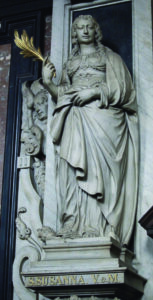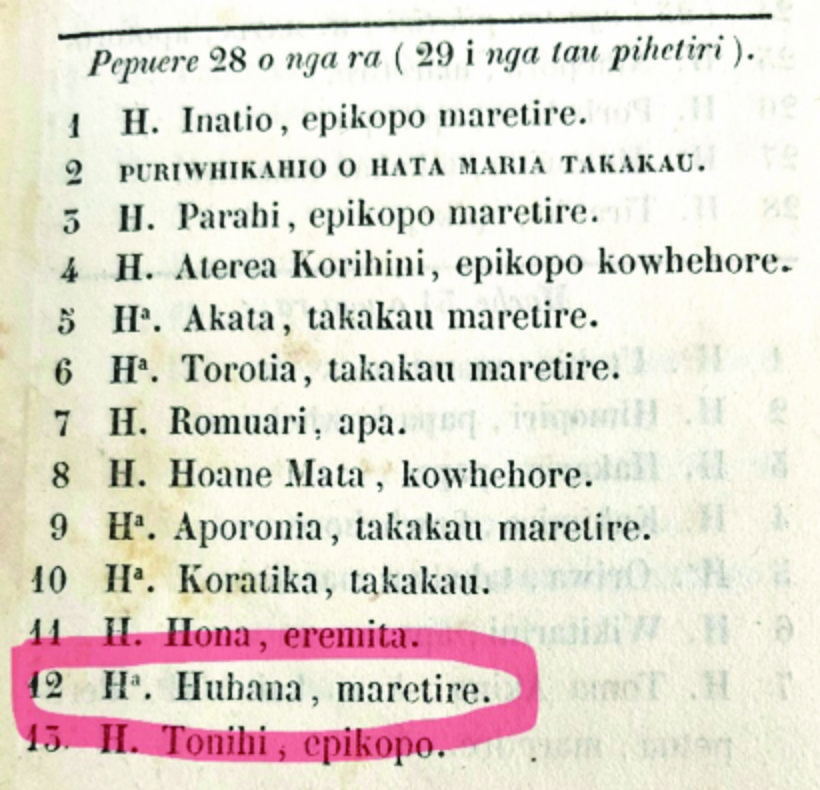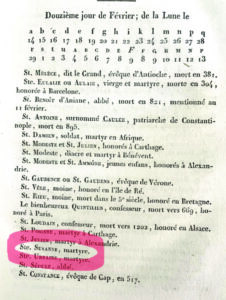February Saint

Fr Mervyn Duffy SM

Santa Susanna in the chapel of the Virgin, Carolus Borromeuskerk, Antwerp Sebastiaan de Neve c. 1638–1640
I am working in the Marist Archive, Wellington, and one of the items that has caught my interest is an 1847 Māori Catholic prayer book – Ko te ako me te karakia o te hahi Katorika Romana, which was printed in Russell and approved for use in the Vicariate of Western Oceania by Bishop Phillip Viard who was then Bishop Pompallier’s coadjutor. It is a substantial little book of 576 pages and it includes a liturgical calendar.
The Calendar is unusual in having a saint for every day. I have been trying to track down where they got their saints from. For 12 February they have Hata Huhana, a martyr. So who was this, and where does that reference on the day come from?
Now, our archives also has a copy of a French Martyrologe Universel published in 1835 with the signature of Maxime Petit SM on the flyleaf. Fr Petit (1797-1858) arrived here as a missionary in 1839. He may well be the composer of the 1847 Māori Liturgical Calendar, certainly the 1835 Martyrology is the source of many of the names.
For February the twelfth there are a list of saints associated with that day. To match up it had to be a female, and a martyr, and phonetically close to “Huhana.” As you can see in the illustration there is really only the one candidate.

From the 1847 Maori Catholic Prayer Book, held in Marist Archives, Wellington
So, ‘Huhana’ is ‘Susanne’ in French, which is often rendered as ‘Susanna’ in English. There is a famous Susanna in the book of Daniel in the Old Testament but who is the martyr Susanna?
When I studied in Rome, the Paulist Fathers staffed a church which styled itself as the American Parish in Rome. This was the church of Santa Susanna and according to legend it was built over her house. This Susanna was the daughter of a priest, Gabinus, and niece of Pope Caius (283-296). An early martyrology gives this reference: “In Rome, at the ‘Two Houses’ beside the Bath of Diocletian, the birthday of St. Susanna.” – birthday referring to her martyrdom – birth into heaven. So, Susanna could well have been martyred in the great persecution of Christians ordered by Emperor Diocletian in 295 AD. Certainly the church of Santa Susanna honours her as a martyr.

From the 1835 French Martyrology owned by Fr Petit SM, held in Marist Archives, Wellington
The only loose end in my story is that St Susanna of Rome is remembered on 11 August, so I am not certain that she is the same martyr that the 1835 martyrology refers to on 12 February.
 Entries(RSS)
Entries(RSS)